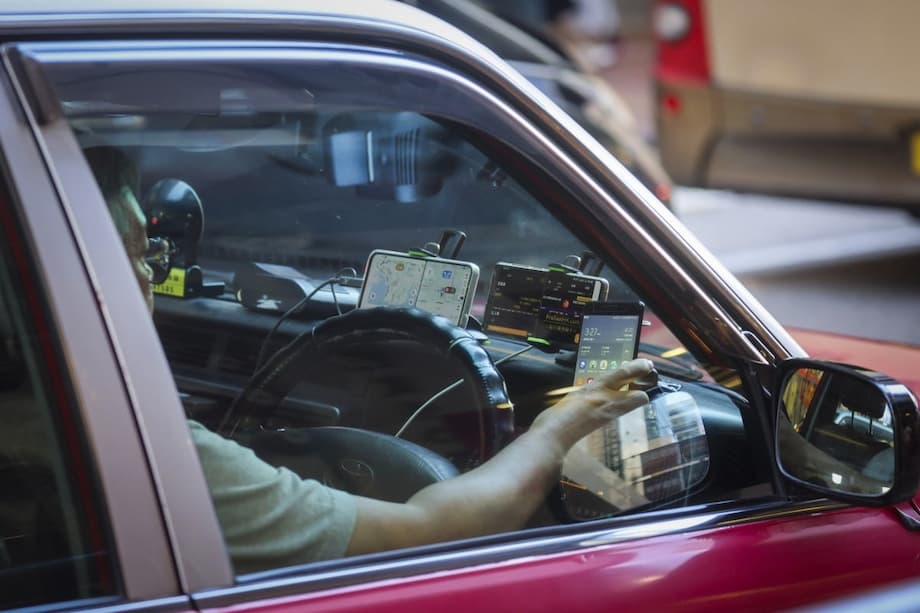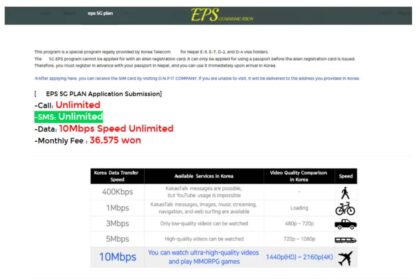Hong Kong’s New Dashboard Phone Limit: A Major Shift for Road Safety
In a significant move to enhance road safety and modernize transport standards, Hong Kong will ban drivers from placing more than two mobile phones on their vehicle dashboards starting January 25, 2026. This new regulation, announced by Secretary for Transport and Logistics Mable Chan, is part of a broader government effort to reduce driver distraction, improve taxi service quality, and boost the city’s appeal to both residents and tourists. The measure comes amid growing concerns about the proliferation of in-car devices and their impact on driver attention, especially among the city’s 40,000 taxi drivers who often juggle multiple devices to manage online orders and navigation.
- Hong Kong’s New Dashboard Phone Limit: A Major Shift for Road Safety
- Why Is Hong Kong Limiting Dashboard Phones?
- How Will the New Rule Affect Taxi Drivers and Ride-Hailing Services?
- Other Road Safety Reforms: Seat Belts, E-Payments, and Child Safety
- Comparing Hong Kong’s Approach to Global Trends
- Broader Implications: Safety, Technology, and Public Perception
- In Summary
Why Is Hong Kong Limiting Dashboard Phones?
Mobile phone use while driving has long been recognized as a major source of distraction, increasing the risk of accidents. In Hong Kong, the use of hand-held mobile phones while driving has been illegal since 2000, with offenders facing fines of up to HK$2,000 (US$257). However, the law previously focused on the act of speaking on the phone or holding it, rather than the number of devices present in the driver’s field of view. The new regulation addresses a loophole: while hands-free kits and mounted devices are legal, the sheer number of screens and notifications can still overwhelm drivers and compromise safety.
Secretary Mable Chan explained that the legislative amendment, to be tabled in the Legislative Council next month, aims to balance road safety with the operational needs of the transport industry and ongoing technological developments. She noted that many people immediately think of taxi drivers, who often mount several phones on their dashboards to handle ride-hailing apps, navigation, and payment systems. The government’s goal is to reduce visual clutter and cognitive overload for all drivers, not just professionals.
Expert Insights on Driver Distraction
According to the Hong Kong Transport Department, using a mobile phone while driving—even with hands-free technology—can significantly impair reaction times and judgment. A spokesperson for the department stated:
“Using a mobile phone while driving distracts drivers and affects driving performance, in particular reaction time in emergency or unexpected situations. For safety’s sake, keep your hands on the steering wheel. Don’t phone and drive.”
Research worldwide supports these concerns. Studies have shown that even glancing at a screen for a few seconds can double the risk of a collision. The presence of multiple devices increases the temptation to multitask, further raising the danger.
How Will the New Rule Affect Taxi Drivers and Ride-Hailing Services?
Taxi drivers in Hong Kong have become increasingly reliant on multiple smartphones and tablets to manage their work. With the rise of ride-hailing platforms and digital payment systems, it’s common to see dashboards crowded with devices, each serving a different function—dispatch, navigation, payment, and communication. Some cabbies have expressed concerns that the new rule could make it harder to operate efficiently, especially during peak hours when managing multiple bookings is essential for income.
However, the government has emphasized that the regulation is not meant to hinder technological progress or the operational needs of drivers. Instead, it seeks to strike a balance between convenience and safety. The Transport and Logistics Bureau has engaged with industry representatives to ensure that the two-device limit will not unduly disrupt taxi services. Drivers will need to prioritize which devices are most essential and may need to consolidate functions onto fewer screens or use multi-purpose apps.
Industry Response and Concerns
Some taxi associations have voiced apprehension about the practical impact of the rule. One industry leader commented:
“We understand the need for road safety, but many drivers rely on several devices to handle orders from different platforms. We hope the government will provide clear guidelines and support for transitioning to the new system.”
To address these concerns, the government has indicated a willingness to work with technology providers to develop integrated solutions that minimize the need for multiple devices.
Other Road Safety Reforms: Seat Belts, E-Payments, and Child Safety
The dashboard phone limit is just one part of a broader package of road safety reforms being rolled out in Hong Kong. Alongside the new phone rule, several other measures will take effect in 2026:
- Mandatory Seat Belts: All newly registered buses and minibuses must have seat belts for every passenger seat. School buses will also be required to install seat belts for all seats.
- Child Restraint Devices: From November 1, children under eight years old and shorter than 1.35 meters must use a child safety seat when traveling in private cars.
- E-Payment Options for Taxis: By April 1, 2026, all taxis must offer at least two electronic payment methods, addressing frequent complaints from tourists and locals about cash-only services.
These changes reflect a comprehensive approach to road safety, targeting not just driver distraction but also passenger protection and service modernization.
Legal Background: Mobile Phone Use in Vehicles
Hong Kong’s existing laws already prohibit the use of hand-held mobile phones while driving. Regulation 42(1)(g) of the Road Traffic (Traffic Control) Regulations (Cap. 374G) states that drivers must not use a mobile phone while holding it in their hand or between their head and shoulder. The penalty for violating this rule is a fine of HK$2,000. The new dashboard phone limit builds on this foundation by targeting the passive distraction caused by multiple screens, even if they are not being actively used.
Comparing Hong Kong’s Approach to Global Trends
Hong Kong’s move to limit dashboard devices aligns with a growing international focus on reducing in-car distractions. In many countries, laws have evolved from simply banning hand-held phone use to addressing broader issues of driver attention. For example, some jurisdictions restrict the use of touchscreens, video displays, and even certain voice-activated functions while driving.
In the United States, the Department of Commerce recently finalized rules to ban certain foreign-made connected-car software and hardware, citing national security and safety concerns. While the focus there is on cybersecurity, the underlying principle is similar: limiting the complexity and potential distractions in vehicle cabins.
Hong Kong’s approach is notable for its specificity—capping the number of devices rather than banning particular functions. This reflects the unique challenges of a city where ride-hailing and digital payments are deeply integrated into daily transport operations.
Vehicle Modification Laws and Enforcement
Hong Kong has strict regulations on vehicle modifications, including the installation of in-car devices. Any modification that affects the vehicle’s compliance with safety standards can result in fines, mandatory inspections, or loss of insurance coverage. The new dashboard phone rule will likely be enforced through routine traffic checks and inspections, with penalties for non-compliance similar to those for existing mobile phone offenses.
According to insurance experts, illegally modified vehicles are not covered by insurance, and even legal modifications must be disclosed to insurers to maintain coverage. Drivers are advised to consult with their insurers before making any changes to their vehicle’s interior setup, including the addition or removal of electronic devices.
Broader Implications: Safety, Technology, and Public Perception
The dashboard phone limit is part of a wider effort to modernize Hong Kong’s transport system and align with international best practices. The city has already announced plans to phase out fossil-fueled private cars by 2035, promote electric vehicles, and expand public transport infrastructure. These initiatives are designed to reduce traffic accidents, lower emissions, and create a safer, more efficient urban environment.
Public reaction to the new rule has been mixed. While many support measures to reduce distracted driving, some drivers—especially those in the taxi and ride-hailing sectors—worry about the impact on their livelihoods. The government’s challenge will be to ensure that safety improvements do not come at the expense of service quality or economic opportunity.
What Drivers Should Do to Prepare
- Review the number of devices currently mounted on your dashboard and plan to reduce them to two or fewer before January 25, 2026.
- Consider consolidating functions onto a single device or using multi-purpose apps to minimize the need for multiple screens.
- Stay informed about upcoming government guidelines and support programs for transitioning to the new system.
- If you are a taxi or ride-hailing driver, check with your platform provider about integrated solutions that comply with the new regulation.
- Consult your vehicle insurer to ensure that any changes to your dashboard setup do not affect your coverage.
In Summary
- Hong Kong will ban drivers from placing more than two mobile phones on their vehicle dashboards starting January 25, 2026, to improve road safety.
- The new rule targets driver distraction, especially among taxi drivers who often use multiple devices for work.
- The regulation is part of a broader package of road safety reforms, including mandatory seat belts for all bus and minibus passengers and new child safety seat requirements.
- Existing laws already prohibit the use of hand-held mobile phones while driving, with fines up to HK$2,000.
- Drivers should prepare by reducing dashboard devices, consolidating functions, and consulting insurers about compliance.
- The government aims to balance safety with operational needs and will work with industry stakeholders to support the transition.












